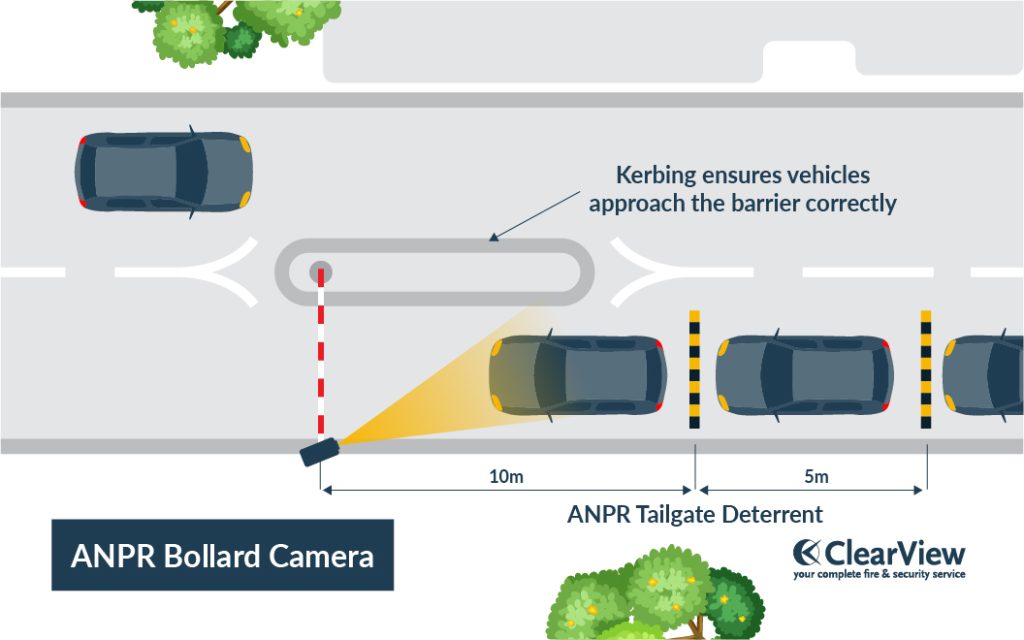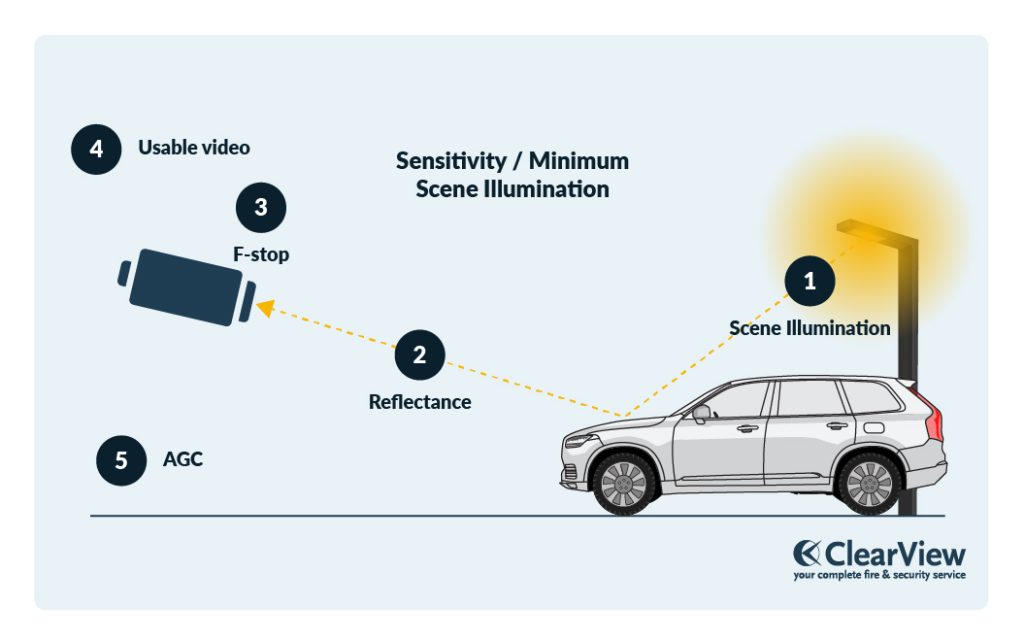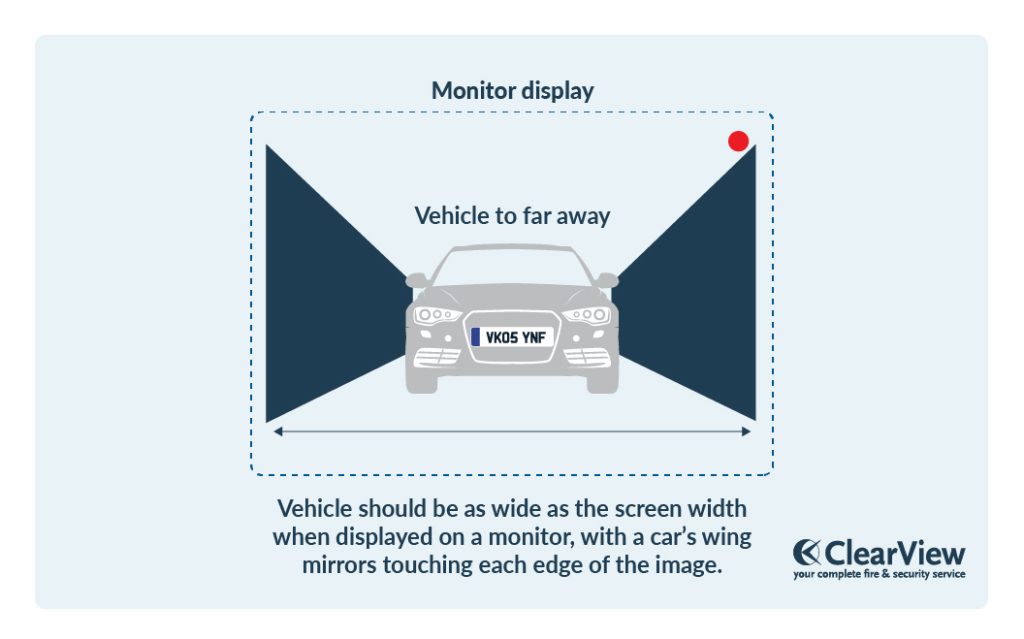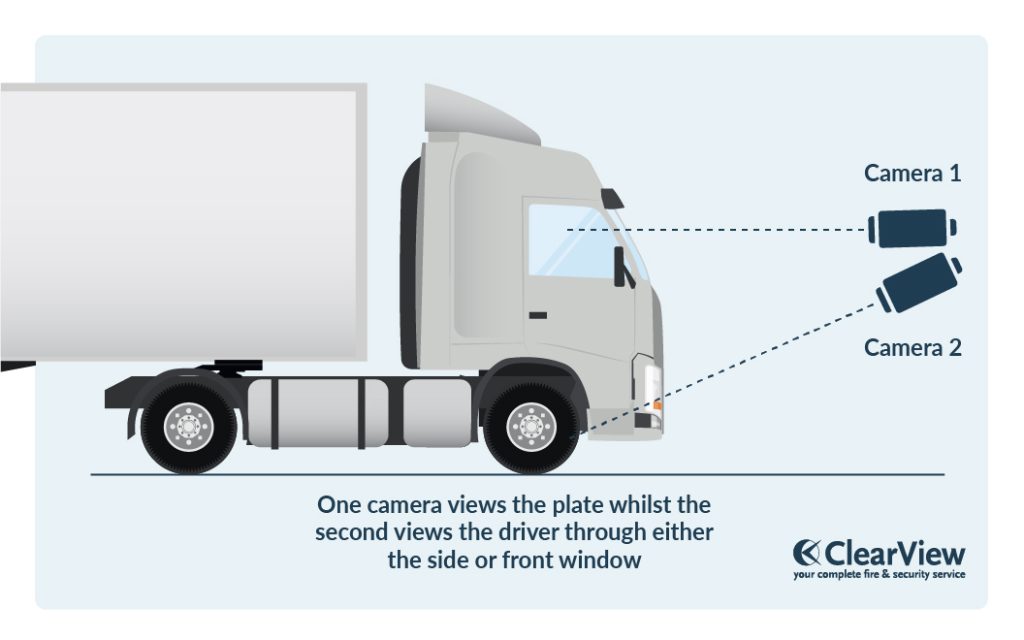The 10 ANPR commandments to ensure that the accuracy and reliability of your system is maximised.
The most important consideration when designing any ANPR system is to ensure the vehicle images are up to standard. Get this right and almost all ANPR recognition software will return success rates over 95%. Get it wrong and you could be faced with some expensive modifications.
With that in mind, here are our top 10 recommendations for a successful system:
1. Location, location, location
It’s vital to choose a suitable location to capture vehicle plates and, when there is little choice, to be aware of a particular location’s limitations.
As you will be zoomed in close on the vehicles, try to pick a spot where the vehicles cannot deviate more than half a car’s width from the central path. If this cannot be avoided, consider reducing the road width (using permanent or temporary kerbing), or consider using additional ANPR cameras. The easy fix of using a wider angle lens is not an option!
Also, pick a place where a camera may view the vehicles head on, or be as close to this ideal as possible. This will offer many benefits including improved accuracy and longer camera exposure times.
Finally, you need to consider tail-gating which will prevent some vehicles from being captured. This is usually a problem when the location suffers from congestion and the vehicles bunch up. The usual solution is to install a speed hump, although a more expensive solution is to use an automatic barrier letting one vehicle through at a time.

2. Choose the right camera for the location
Although many cameras are promoted as ANPR cameras, only a relatively small proportion have all the technical features necessary to ensure optimal plate reading capability.
An ANPR camera will require infra-red (IR) illumination, and a very fast shutter speed (1/10,000 to 1/20,000 second). The IR lamp should be shuttered in synchronization with the camera to provide a maximum burst of light to illuminate the number plate. Also, ensure that your camera has a zoom lens so that the angle of view can be adjusted precisely to obtain the best possible angle of view (preferably via motorized control to save having to open up the camera case each time you want to tweak the lens angle).
Many organizations also want a good colour image of the vehicle and perhaps images of the occupants. A good way to achieve this is by using more than one camera per traffic lane, with an infrared camera to recognize the plate and associated colour overview cameras to capture the vehicle or occupants. Technically, this is a best approach.
3. Site the camera well
The camera needs to be installed level and should view the vehicle from dead ahead if possible. If there is no suitable mounting point, consider a column with an extended arm to bring the camera out above the traffic, but bear in mind the clearance required for the tallest vehicles using the roadway.
Do not try to capture the vehicle from behind as accuracy will be reduced (amongst other things car plates are often obscured by bicycle racks or tow bars, whilst lorry trailer plates are usually fixed by elastic cord over the characters).
The ideal camera height is 0.9m above ground level. It should not be too high in relation to the recognition point; try to keep the maximum vertical angle below 30 degrees. However, if tail-gating is also problem that cannot be solved by other means; you may need to compromise between these two requirements since a greater angle will improve tailgating problems. Be aware that increasing the vertical viewing angle also increases the need for shorter exposure times.

4. Zoom in close
Most initial problems with ANPR systems are due to the camera not having a close enough view of the vehicle. As a general rule, the vehicle should be as wide as the screen width when displayed on a monitor, with a car’s wing mirrors touching each edge of the image.
To achieve the best viewing angle, it is important to choose ANPR cameras with variable focal length or zoom lenses. Using a camera with remote control of lens zoom will also make camera set-up far quicker, easier and more accurate.
Whilst some ANPR systems can work with smaller plates than this, you can be sure of success if you stick by this rule. exposure times.

5. Avoid blurred images
A sharp image of the license plate is essential if you wish to achieve the highest success rate. Ensure that the camera is focused on the chosen recognition point.
Only use ANPR cameras with high shutter speeds. To avoid mis-reads due to blur, shutter speed should be set to 1/20,000 second. Also, ensure that the ANPR camera has a pulsed LED infra-red illuminator. This will ensure maximum light reflects from the number plate ensuring that even vehicles are travelling at speed in darkness they can be read reliably.

6. Driver images
If you wish to obtain driver images and your location is a site entrance, you can successfully obtain an image of each driver by employing two cameras. One camera views the plate whilst the second views the driver through either the side or front window. Because of the reflective glass, it is necessary to use a polarizing filter on the camera viewing the driver. This will replace the problem of reflections in the windscreen making it difficult to see the driver.

7. Software – Start with the Basics
If you need a central system which can capture records from multiple locations in order to provide unified data, either now or in the future, check that the software can be networked. It is important to be sure whether the system could possibly expand to multiple workstations or multiple sites later on – if it might, it makes much more sense to choose a system which has a network option now and avoid problems with re-configuring the system and retraining staff.
Recognition accuracy is single most contentious issue with new systems. Try and ensure that the accuracy stated is genuine; ask how it was measured and whether it has been verified. Also try and establish if there is any reason why your system will not reach the stated accuracy figures.
The system provider should make you aware of any design aspects which will reduce the final accuracy.
Finally, consider how you will want the statistics and data collected by the ANPR system to be presented. Tables of data are fine for many requirements, but would some in your organisation prefer to have the data presented graphically for easier interpretation and more instant clarity. Make sure you’re aware of the presentation capabilities of the ANPR software package you’re considering.

8. Keep your data secure
The personal data you capture needs to be stored securely and only for a limited period, in order to comply with the Data Protection Act.
Ensure the ANPR software you choose uses file encryption to prevent unauthorized access to the personal data when stored (or that some other reliable means of securing the data is provided).
Unless you are prepared to regularly check and manually delete records, also ensure that timed automatic deletion is included to so that recognition records will not be stored beyond your maximum period.
If you intend to use recognition images as evidence, watermarking is an important feature that verifies a digital image has not been tampered with since it was first captured.
A secure method to enable operators to log on to the system is essential for protecting access to the records from unauthorized users. A detailed audit trail is also a major benefit as it enables a retrospective check on who did what and when.
Ensure that the ANPR system settings and historic ANPR data are backed up – preferably on solid state media (e.g. compact flash, SD card etc.) rather than a hard disc. Hard discs are more prone to failure than other IT components because they have moving parts. Systems which are reliant on hard discs are inherently less robust than those relying on solid state components.
9. Don’t use a domestic platform for an industrial application
Do not choose an ANPR system which runs on windows software on a desktop PC unless you are willing to accept an ANPR system which crashes as frequently as a standard PC, and suffers from software bugs and viruses common with standard PCs. An industrial system offering embedded software, uninterruptible power supply (UPS) back up and solid-state data back-up will provide maximum resilience.
10. Try before you buy
Before purchasing your ANPR system, ask suppliers to demonstrate their ANPR systems over a 24hour period at your location. This will confirm that the system can operate reliably under your specific site conditions taking account of vehicle flow, lighting conditions and any physical limitations governing camera positioning.